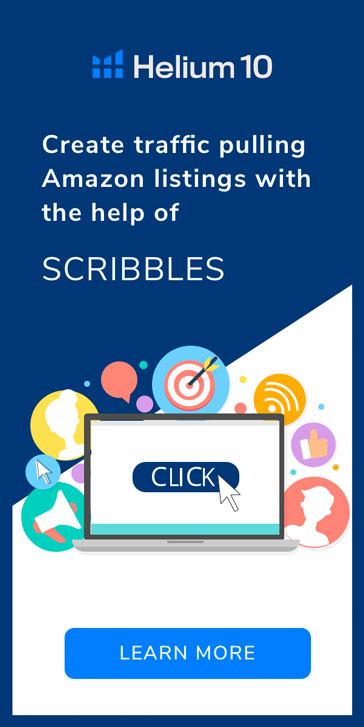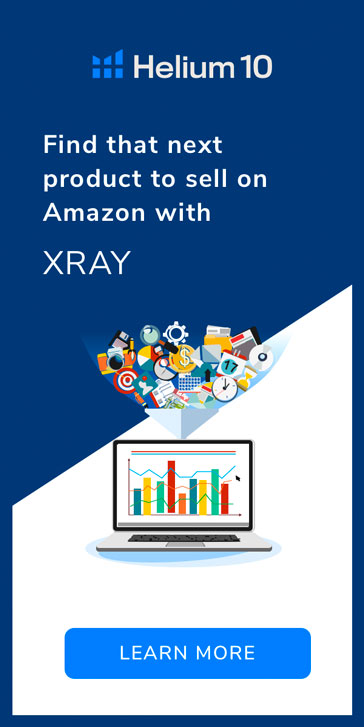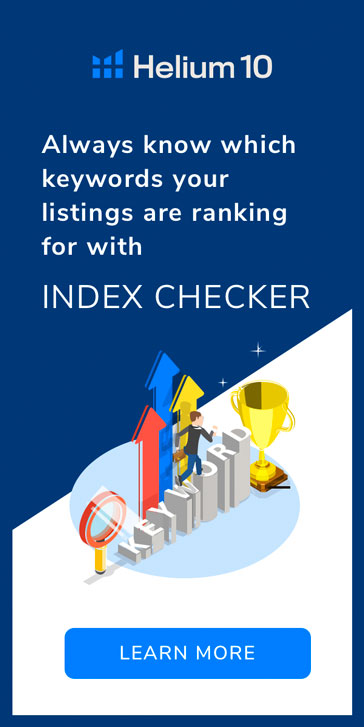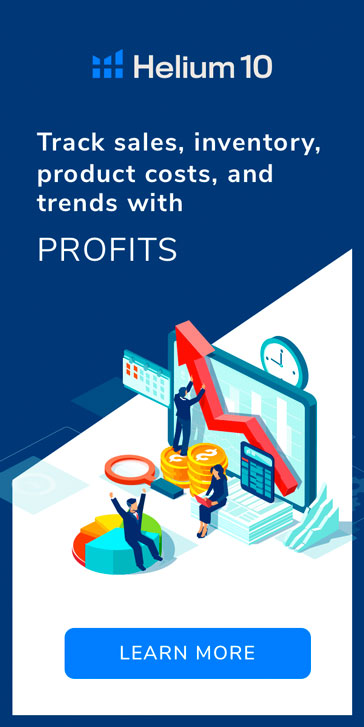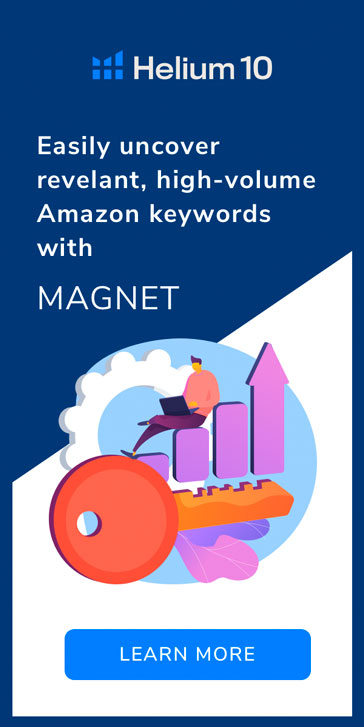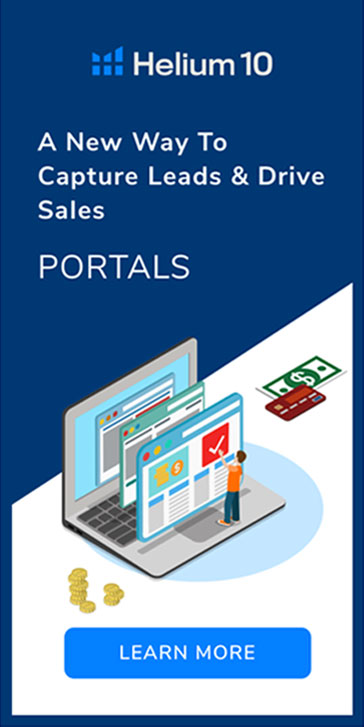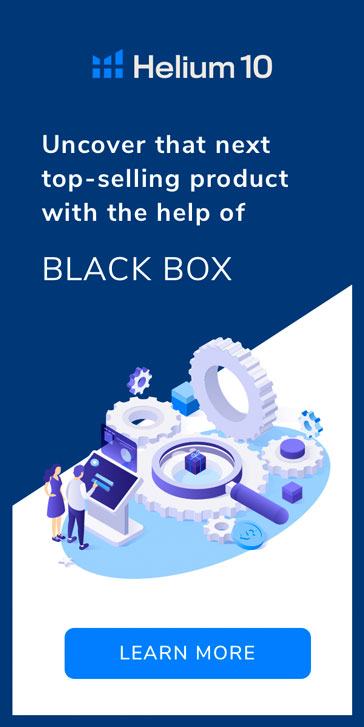I remember when I started selling on Amazon in 2014, the formula for “winning” was much different than it is today.
Back then all it really took was some good listing copy, since the bulk of competition came from vendors and big brands whose listings typically consisted of a single image and bullet point, with the SKU and product name as the title.
When the market started to get flooded with third party private label sellers, listing quality dramatically increased across the board, with the vendors and big brands catching on as well. Once this became the norm, it was no longer as effective alone.
Sometime in 2015 another tactic started making headlines; bundling.
Many superstar sellers started crawling out of the woodwork claiming that bundling their products was the key to their success. And it makes sense…..on paper.
If the ultimate goal is to stand out from the crowd, then giving excessive value is a surefire way to do it.
Conventional wisdom points out that if you offer, for the same price as competitors, MORE, then your perceived value increases and you’ll win the sale. Many times this is true, but that doesn’t mean it is the best move for your brand.
First, let’s go over the obvious hurdles that bundling causes…
Logistical Challenges of Bundling Products
The biggest hurdle is when you make the decision that bundling will help solve all your Amazon selling problems AFTER you’ve already shipped all your inventory to FBA.
This is an important thing for FBA sellers to understand; Amazon does not/will not/can not/shall NOT bundle your products for you.
Aside from not bundling them for you, Amazon requires that bundled items be packaged together under its own ASIN in order to advertise them together on a listing. This means you have to get your items bundled BEFORE you send them in.
If this is something you aren’t up to the task to do yourself, you can have your goods shipped to a kitting warehouse (some distribution centers offer this service too) but it definitely adds cost. The most inexpensive way to bundle would be directly at the factory where you can treat it as a single unit.
However, logistics isn’t the only problem…
Decreased Perceived Value of Individual Offers
Dan Ariely, author of the book Predictably Irrational, points to research done in an effort to discover how consumers value products, and what might be done to increase their value perceptions.
In his research, it was discovered that bundling products, or otherwise adding “bonus items,” diminished the perceived value of the items involved.

And his research was not isolated. This has been replicated time and time again. When bonus items are added to a product to increase perceived value, often the opposite happens.
But why?
It turns out that we humans actually struggle with understanding the value of things. Often we must be primed to receive a value proposition. As such, the clearly defined lines of value surrounding a specific, individual product are blurred when other items are added.
In the experiments conducted on this, every case showed people rating the value of items in a bundle as less valuable than they did when the item was by itself.
That means that, for example, a garlic press where most people agreed they would pay $9.99 for it, when bundled with a can opener, only thought the press was worth $8.99.
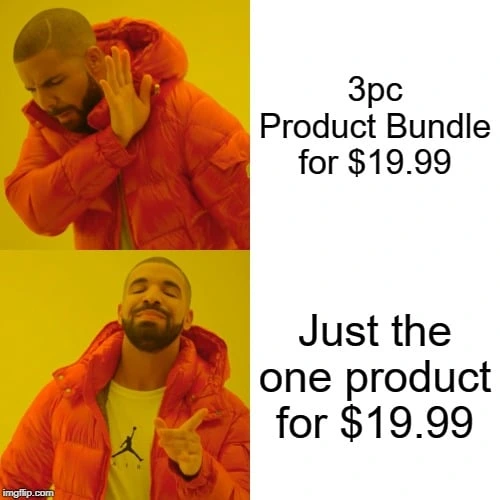
In many instances, people actually thought the entire bundle was worth less than they would pay for the individual product. And this happened with every single product that was bundled. Almost magically, when paired with other items, products simply lose value.
And in some extreme instances, people actually lose the desire to buy the product altogether.
If the bundle just has too many items, or too much going on, potential buyers will be unable to attach value to any one thing, and therefore will be unable to attach value to anything at all.
The above phenomenon is referred to as “the Presenter’s Paradox” and it is a very real threat to your margins.
Lessened Perceived Value Is Only Part of the Problem
Another problem would-be bundlers face is deciding on a good product bundle fit.
See, typically when deciding to bundle our products together on Amazon, we sellers do so for the express purpose of standing out with the amount of value we have to offer. In doing so we may just assume what products will work together in a bundle.
The thing is, not everyone who buys a phone case also wants tempered glass. Not everyone who buys a veggie spiralizer wants a mini peeler.
While some bundles make logical sense (video games with the game console), many can just look like extra “junk” that is not needed.

Most people don’t like taking medicine that treats symptoms they don’t have when they are sick. In the same line of thinking, many people don’t like buying products they don’t need or won’t use, even if it came as a “freebie.”
If you sell a garlic press for the exact same price as someone else, but you offer a Keto cookbook with yours, there’s a chance that anyone not specifically seeking keto recipes will choose your competitor’s product.
If all this seems irrational, you aren’t wrong. It is. But as humans, we are not always rational. Not by a long shot. As such, it is important to know how to communicate your offer so that, rational or not, the easy choice is your products.
Buyer Psychology Be-Damned, I’m Bundling Anyway
The truth is, despite all this, some people do make bundling work for them. For example, you’ll rarely ever see a video game console sold without video game bundles. And even though research has pointed out that this lessens the value of the console itself, it still increases sales volume dramatically.
And sometimes a lower margin is ok if it is replaced by exponentially larger sales volume.
So if you sell in a market where bundles are the norm, or you feel it can have a positive impact on your sales volume, then you at least need to make sure you follow these basic bundling tenets and do it right.
- Do Your Research. Make sure you use a tool like Helium 10’s Black Box (Product Targeting) to look at all the frequently bought together products associated with your offer so that what you bundle makes sense.
- Offer a Variation. Make sure that you don’t just offer a bundle. Offer the main product, or all the bundled products, individually too. This will establish the value in your potential customers’ minds first, so then they know what kind of deal they are getting.
- Don’t Be Cheap. If you sell a premium product, avoid bundling it with something cheap. The lack of value in the one will significantly diminish the value of the other. Make sure you pair products together of similar quality.
- Price Intelligently. You’ll need some wiggle room with your margins to effectively bundle, because you’ll likely have to test different price points. What the resulting “value” that consumers place on your bundle will be, no one knows. So test price points that make sense and eventually they’ll let you know.
Why is Perceived Value Important?
Ultimately bundling can increase sales velocity, but at the expense of perceived value. So it comes down to whether you are selling on Amazon to make some relatively quick profits, or are seeding the growth of a brand.
Establishing value for your branded products is an important step in the growth of a brand. That perceived value is precisely the reason people will buy your brand’s products, or choose them over other brand products, or come back for more.
Winning the value battle is crucial to winning the necessary footing to gain traction for your brand. As such, I caution against any strategies that may diminish the value in potential customers’ eyes of the products your brand offers now and into the future.
Selling on Amazon, or any marketplace for that matter, is rife with competition and therefore tough to manage growth on. Be that as it may, if your product truly offers value to the marketplace, and truly offers solutions to market segments, then short term sales wins might not be worth it.
When building out an offering for the Amazon sales channel, keep value at the top of mind. Look at how Amazon customers value products that are similar, and how your product brings more value in and of itself.
You’ll want to let the market tell you what it thinks your products are worth, but help them along by establishing value markers.
When you’ve got a clear idea of how your products are valued, then assess the niche as a whole, and your competition, before deciding whether bundling would be a good move, or could potentially put your brand at a disadvantage.
Original post from Why Bundling Isn’t Always the Most Strategic Way To Differentiate – Helium 10












